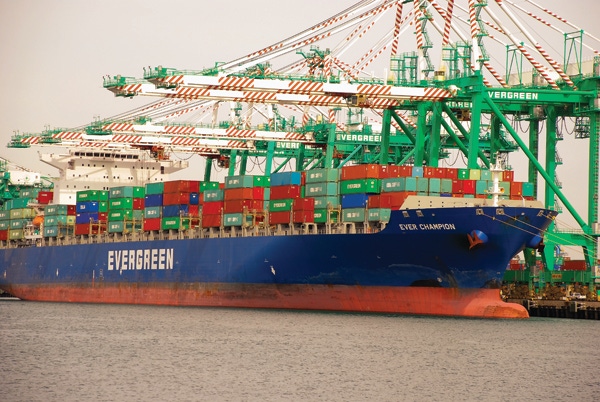Meat, grain industries comment on trade barriers
USMEF and USGC detail many obstacles hindering U.S. agricultural exports.

The U.S. Grains Council (USGC) and the U.S. Meat Export Federation (USMEF) recently submitted comments to the Office of the U.S. Trade Representative highlighting significant trade barriers facing exports of U.S. agricultural products.
For at least the last 35 years, USTR has issued a report on trade barriers facing U.S. goods and services, in part to fulfill a legal requirement of the U.S. President to report to Congress on that topic annually. Contributions from organizations like USGC help USTR provide quantifiable impacts of trade barriers on U.S. exports and detail feasible actions that can be taken to eliminate those barriers.
“We believe that resolution of the broad range of trade barriers outlined in this report could bring about a correction in the coarse grain trade trends of the last decade, restore market access and allow U.S. producers and agribusinesses to effectively explore and capture new markets and business opportunities,” USGC wrote in the submitted comments. “The council has worked cooperatively with USTR on a number of these issues. We look forward to continued collaboration.”
Floyd Gaibler, USGC director of trade policy and biotechnology, added, “It is important to understand the specific complexities of each trade barrier in each market. USTR and U.S. Department of Agriculture officials use this information in their continuous, cooperative work with our overseas offices to increase market access for U.S. agricultural products.”
Among the highest-priority items for the council are persistent non-tariff issues like biotechnology approval policies. Delays in biotech approvals in Mexico, asynchronous biotech approvals in Brazil and worldwide irregularity on the regulation of plant breeding innovations all inhibit U.S. agricultural products from entering these large markets.
Unjustified restrictions on genetically modified products have had dramatic impacts on U.S. corn sales to the European Union. The U.S. was once the largest foreign supplier of corn to the EU, but there have been no substantial exports to the EU since the late 1990s, when these policies were put into place. A USGC analysis estimates that these asynchronous biotech regulatory processes have contributed to a loss in U.S. corn exports totaling 100 million metric tons at a value exceeding $15 billion.
An increasing area of concern is related to regulatory restrictions on crop protection products, including maximum residue limits in the EU that are set lower than internationally recognized standards.
In addition to these non-tariff barriers to trade, countervailing duties and value-added taxes put U.S. agricultural products at a financial disadvantage. Similarly, import tariffs and tariff rate quotas also directly affect the price of U.S. coarse grains and co-products, removing competitive advantages on price.
In comments available online, USMEF identified many obstacles that negatively affect red meat exports and/or increase costs for the U.S. industry, including China’s various market access barriers, including COVID-19-related measures and the 25% retaliatory duty on U.S. pork imposed in response to Section 232 tariffs. USMEF expects U.S. pork and beef exports to China and Hong Kong to reach at least $3.5 billion in 2020.
Also discussed in the comments is Japan’s annual safeguard for U.S. beef, which USMEF expects to be triggered early next year. USMEF projects that by 2025, U.S. red meat exports to Japan could approach $4.3 billion – roughly $2.4 billion for U.S. beef and $1.9 billion for U.S. pork – as consumption of U.S. red meat increases due to greater access for Japanese consumers from the U.S. gaining import market share.
The main limitation to further growth for U.S. beef exports to Japan is the new annual safeguard for U.S. beef, which USMEF expects to be triggered in February 2021 and will result in a snapback to a 38.5% duty, up from the current 25.8%, in place for 45 days. As written in the agreement, the safeguard will be triggered every year, as it only grows 1-2% per year, and the base rate is less than current trade volumes. The disadvantage will be unique to the U.S., as the Comprehensive & Progressive Agreement for Trans-Pacific Partnership and EU safeguards will not be triggered.
USMEF also detailed barriers that greatly limit U.S. red meat access in the EU, including high tariffs, restrictive quotas and sanitary measures, unwarranted restrictions on production and processing technologies, bovine spongiform encephalopathy-related market access restrictions for U.S. beef, establishment registration lists and questionnaires and continued lack of access to certain markets for U.S. lamb.
The comments also recap the significant market access gains made in the past year in key markets such as Japan and China and discuss the potential benefits of current trade agreement negotiations with the U.K. and Kenya.
Together, these comments help provide input not only for USTR but also for USGC’s Trade Policy Advisory Team and for country and regional offices developing trade policy strategies for the council’s operational blueprint, the "Unified Export Strategy."
About the Author(s)
You May Also Like




.png?width=300&auto=webp&quality=80&disable=upscale)
